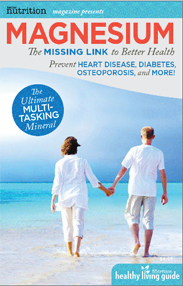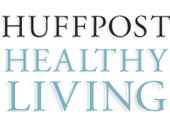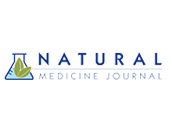Do You Really Need a Drug for Your Bones?
Dr. Susan E. Brown, PhD, Center for Better Bones -
There are several categories of drugs being prescribed in the name of bone protection. In this article we discuss the latest findings on the group known as bisphosphonates.
If you’ve turned on the TV lately, leafed through a magazine, or surfed the internet, you’ve likely seen an advertisement warning you about bone loss. And the ad most likely recommends a certain medication to prevent it. It’s true that many more people are suffering from osteoporosis today than in the past, but lots of women want to know if they really need to take Fosamax, Actonel, Boniva, or some other prescription medication to strengthen their bones.
Quite simply, my answer is no. In almost all cases, taking a prescription medication is not needed. Women from around the country come to our bone center for a natural approach to strengthening their bones — and it’s been working for more than 20 years. Osteoporosis and osteopenia medications are big business, but despite all the hype and marketing from drug companies, there is a safer, more effective and natural approach to bone health available to you.
Prescription drugs known as bisphosphonates often do lead to initial increases in bone mineral density in those women taking them, but the osteoporosis story is much more complicated than how dense your bone appears on a bone density scan. In many cases these medications don’t add any benefit in terms of fracture, and as we’ve been seeing lately, they may even hurt bone. Several women have recently reported strange fractures after taking bisphosphonates for five years or more — something I started to see in my practice years ago.
Let’s take a closer look at prescription drugs for bone health, so you can make an informed decision about treatment for osteoporosis and osteopenia.
How bisphosphonates work — denser may not mean stronger
Bisphosphonates haven’t been on the market for very long, so we are still learning about their exact effects in the body. But we do know that the molecules in these drugs attach themselves strongly to the mineral surfaces1 in both cortical (outer compact bone) and trabecular (inner spongy matrix) bone to increase mass.
1. Russell, R. 2006. Bisphosphonates: From bench to bedside. Ann. NY Acad. Sci., 1068, 367–401. URL (abstract):http://www.ncbi.nlm.nih.gov/pubmed/16831938 (accessed 08.05.2008).
One way the drugs do this is by preventing trabecular perforations that can weaken bone structure.2 Another way is by interfering with cells that break down old bone — known as osteoclasts.3 This means resorption, the natural process of clearing out old bone, is inhibited, so that existing bone stays put for periods much longer than usual. But we now know that there is a lag time for the first six to 12 months after starting the drugs, when bone continues to build and stops being broken down.4 This initial uncoupling of the natural bone turnover process explains why results on bone density testing appear dramatic in the first year on a bisphosphonate. But after a year, things start to change, and bone volume plateaus.
Like the process of bone resorption, bone formation will eventually stop when on a bisphosphonate. Though the exact mechanism of action isn’t known at this time — we know that osteoblasts (our bonebuilder cells) are inhibited by bisphosphonates. Research shows that after the first year, markers for bone turnover — growth and resorption — go down dramatically.5 So bone is neither building up nor breaking down once you’ve been taking a bisphosphonate for more than a year or so.
The question is: does this make bone stronger? In my opinion it’s always dangerous to work against nature. And though women who take bisphosphonates may appear to have denser bone initially on a bone scan, it doesn’t mean the bone is actually stronger. In fact, we know that bone naturally becomes less dense as we age, but what protects us from debilitating fracture is our inborn ability to repair, meaning to break down old bone and rebuild new bone naturally. And because this natural bone repair process is halted when on drugs like Fosamax and Actonel, it is very likely that these drugs over the long haul will weaken, not strengthen, bone.
2. Ott, S. 2007. Bisphosphonates: Effects on bones. Bisphosphonate structure. URL: http://courses.washington.edu/bonephys/opbis2.html (accessed 07.31.2008).
3. Russell, R. 2006. Op. cit.; Rogers, M. 2003. New insights into the molecular mechanisms of action of bisphosphonates. Curr. Pharm. Des., 9 (32), 2643–2658. URL (abstract): http://www.ncbi.nlm.nih.gov/pubmed/14529538 (accessed 08.05.2008); Fisher, J., et al. 1999. Alendronate mechanism of action: Geranylgeraniol, an intermediate in the mevalonate pathway, prevents inhibition of osteoclast formation, bone resorption, and kinase activation in vitro. Proc. Natl. Acad. Sci. USA, 96 (1), 133–138. URL (abstract): http://www.ncbi.nlm.nih.gov/pubmed/9874784 (accessed 08.05.2008); Luckman, S., et al. 1998. Nitrogen-containing bisphosphonates inhibit the mevalonate pathway and prevent post-translational prenylation of GTP-binding proteins, including Ras. J. Bone Miner. Res., 13 (4), 581–589. URL (abstract): http://www.ncbi.nlm.nih.gov/pubmed/9556058 (accessed 08.05.2008); van Beek, E., et al. 1998. Binding and antiresorptive properties of heterocycle-containing bisphosphonate analogs: Structure–activity relationships. Bone, 23 (5), 437–442. URL (abstract): http://www.ncbi.nlm.nih.gov/pubmed/9823450 (accessed 08.05.2008); Rodan, G., & Fleisch, H. 1996. Bisphosphonates: Mechanisms of action. J. Clin. Invest., 97 (12), 2692–2696. URL (PDF): http://www.jci.org/articles/view/118722/pdf (accessed 08.05.2008).
4. Ott, S. 2007. Bisphosphonates: Effects on bones. Bisphosphonate structure. URL: http://courses.washington.edu/bonephys/opbis2.html (accessed 07.31.2008).
5. Bauer, D., et al. 2006. Pretreatment levels of bone turnover and the antifracture efficacy of alendronate: the fracture intervention trial. J. Bone Miner. Res., 21 (2), 292–299. URL (abstract): http://www.ncbi.nlm.nih.gov/pubmed/16418785 (accessed 08.05.2008); Bauer, D., et al. 2004. Change in bone turnover and hip, non-spine, and vertebral fracture in alendronate-treated women: The Fracture Intervention Trial. J. Bone Miner. Res., 19 (8), 1250–1258. URL (abstract): http://www.ncbi.nlm.nih.gov/pubmed/15231011 (accessed 08.05.2008).
You may have read the recent news about women taking bisphosphonates for more than five years and spontaneously fracturing their femur bones while simply walking or standing.6 I had a patient who had been on Fosamax for four years, then simply turned in her bedroom one evening and fell to the floor, breaking her leg in two separate places. Though these “low trauma” and “nontraumatic” fractures aren’t happening in all women on bisphosphonates, they certainly serve as a warning for those considering prolonged use of these drugs as “preventative medicine.” It also points to the fact that halting bone resorption doesn’t automatically give us stronger bones, and may in fact make them more brittle over time.
Risks vs. benefits — spinning the numbers
When it comes to osteoporosis, most women and their practitioners are primarily concerned with fractures. The thinking behind bisphosphonates was that if we could halt the bone breakdown process and make bones denser, we could prevent them from breaking. Most of the ads you see will tell you this is the case. But on taking a closer look, the numbers don’t seem so hot.
What’s disappointing to me is the way numbers from studies can be manipulated to exaggerate treatment benefits. Allow me to give you an example. When the manufacturers of Fosamax say that the drug can reduce fractures by up to 50% in high?risk women, what they are referring to are results of a 2004 study showing relative risk reduction among women who, as a group, are already highly likely to fracture before they are even selected for the study. Most women don’t have time to analyze study results in detail, but it reveals that out of thousands of high?risk postmenopausal women (those with osteoporotic bone density and a history of previous fracture), about twice as many (2.2%) of the placebo group will fracture as those taking the drug (1.1%). Because 1.1% indeed is half of 2.2%, the drug’s manufacturer can advertise that the drug reduces hip fractures by 50% — which is the relative risk reduction (that is, a comparison of the number of people who fractured in both groups).
6 Kwek, E., et al. 2008. An emerging pattern of subtrochanteric stress fractures: A long-term complication of alendronate therapy? Injury, 39 (2), 224–231. URL (abstract): http://www.ncbi.nlm.nih.gov/pubmed/18222447 (accessed 08.04.2008); Neviaser, A., et al. 2008. Low-energy femoral shaft fractures associated with alendronate use. J. Orthop. Trauma, 22 (5), 346–350. URL (abstract): http://www.ncbi.nlm.nih.gov/pubmed/18448990 (accessed 08.04.2008); Parker-Pope, Tara. 2008. Drugs to build bones may weaken them. New York Times, July 15, 2008. URL: http://www.nytimes.com/2008/07/15/health/15well.html?partner=rssnyt&emc=rss (accessed 07.29.2008); Cheung, R., et al. 2007. Sequential nontraumatic femoral shaft fractures in a patient on long-term alendronate. Hong Kong Med. J., 13 (6), 485–489. URL (abstract): http://www.ncbi.nlm.nih.gov/pubmed/18057440 (accessed 08.04.2008).
But let’s not forget that both groups contained many more people who did not fracture at all, and if you include them in your comparison, you get what’s called the absolute risk reduction — a paltry 1.1% (2.2 minus 1.1) — in those taking Fosamax compared to those not taking anything.7
A 2008 review of more than 40 years’ worth of data on more than 12,000 women using alendronate — that’s a lot of data — shows that overall, there was a mere 1?2% absolute risk reduction with its use. Co?opting this science, direct?to?consumer marketing continues to play up the 45–50% relative risk reduction figures.8 Yes, relative risk reduction can be a useful tool for researchers, and of value to a healthcare provider when determining absolute risk reduction. But any good biostatistician will tell you that it does not seem to be as useful a measure for patients or families when choosing a method of treatment!9
Another detail we don’t hear from the drug companies is that fracture?reduction benefit of these drugs is largely for secondary prevention — that is, when bone density is already osteoporotic and/or there has been an existing fracture. There is much less benefit in primary prevention, where bone density is not osteoporotic and there have been no previous fractures. In women with osteopenia, some research even suggests increased rates of certain types of fracture with prolonged use!10 In fact, these drugs are not recommended at all for primary prevention, yet women who are not at elevated risk for fracture are among the largest target audience of direct?to?consumer advertising for bone drugs.11
7. McClung, M., et al. 2004. Prevention of postmenopausal bone loss: Six-year results from the Early Postmenopausal Intervention Cohort (EPIC) study. J. Clin. Endocrinol. Metab., 89 (10), 4879–4885. URL: http://jcem.endojournals.org/cgi/content/full/89/10/4879 (accessed 08.05.2008).
8. Wells, G., et al. Alendronate for the primary and secondary prevention of osteoporotic fractures in postmenopausal women. Cochrane Database Syst. Rev., 23 (1). URL (abstract): http://www.ncbi.nlm.nih.gov/pubmed/18253985 (accessed 08.05.2080).
9. Wieand, H. 2003. Is relative risk reduction a useful measure for patients or families who must choose a method of treatment? J. Clin. Onc., 21 (23), 4263–4264. URL: http://jco.ascopubs.org/cgi/content/full/21/23/4263 (accessed 08.05.2008).
10. MacLean, C., et al. 2008. Systemic review: Comparitive effectiveness of treatments to prevent fractures in men and women with low bone density or osteoporosis. Ann. Intern. Med., 148 (3), 197–213. URL (abstract): (accessed 08.11.2008); Cummings, S., et al. 1998. Effect of alendronate on risk of fracture in women with low bone density but without vertebral fractures. JAMA, 280 (24), 2077–2082. URL: http://jama.ama-assn.org/cgi/content/full/280/24/2077 (accessed 08.07.2008).
11. Alonso–Coello, P., et al. 2008. Analysis. Drugs for pre-osteoporosis: Prevention or disease mongering? BMJ, 336 (7636), 126–129. URL: http://www.bmj.com/cgi/content/full/336/7636/126 (accessed 08.06.2008).
If women knew the reality of these numbers and the dangerous side effects that come with taking bisphosphonates12 (see chart at left), I’m sure they would reconsider the merits of taking a prescription for low bone density for the rest of their days. This information is hard to find, and many practitioners don’t have the time to analyze the statistics of each and every study that comes across their desk.
I would advise women to ask their providers what the absolute risk reduction is for a drug before taking it. Or you can also ask about the number needed to treat (NNT). This figure gives you a sense of how many women would have to take the medication for one woman to receive a benefit, and the lower the NNT, the better the chance that the drug will benefit you. For example, the above information tells us that Fosamax reduces fracture risk by about 1% (absolute risk reduction), so 100 women would have to be treated for one to benefit from fracture risk — the NNT is 100, in this case. In essence, the NNT is telling us that for every single woman who is benefiting from these drugs, 99 more are getting no benefit at all!
The business behind bone density drugs
Unfortunately, the ads we see on television for various osteoporosis drugs don’t mention how small the benefits really are, or how serious the side effects can be. As the Baby Boomers begin to grow older, pharmaceutical companies have a market larger than ever before for bisphosphonates, and they aren’t stopping at much to capitalize on it. In fact, this large aging population is part of the reason it looks like osteoporosis has become an epidemic in this country. In reality, US hip fracture rates have gone down since the late 1960’s in women and since the early 1990’s in men, despite an aging population.13,14 Because of the large number of aging Baby Boomers, the actual number of fractures can seem overwhelming, even though the rate is decreasing.
Possible adverse side effects associated with osteoporosis medications (bisphosphonates)
• Ulcers of the esophagus
• Upper GI irritation
• Irregular heartbeat
• Fractures of the femur
• Low calcium in the blood
• Skin rash
• Joint, bone, and muscle pain
• Jaw bone decay (osteonecrosis)
(rarely)
• Increased parathyroid hormone (PTH)
12. Heckbert, S., et al. 2008. Use of alendronate and risk of incident atrial fibrillation in women. Arch. Intern. Med., 168 (8), 826–831. URL (abstract): http://www.ncbi.nlm.nih.gov/pubmed/18443257 (accessed 08.05.2008); Ott, S. 2008. Bisphosphonates. URL: http://courses.washington.edu/bonephys/opbis.html#side (accessed 08.05.2008).
13. Melton, L.J. 3rd, Therneau, T.M., Larson, D.R. 1998. Long-term trends in hip fracture prevalence: the influence of hip fracture incidence and survival. Osteoporosis Int 8:68–74.
14. Sehgal, A. 2008. Prevalence of US osteoporotic hip fracture hospitalizations declines despite an ageing population. URL: http://www.medicalnewstoday.com/articles/111030.php (accessed 08.05.2008).
It’s true that such a large group of people getting older, possibly fracturing, and taking up hospital beds will represent a burden to society. This is partially why drug companies want to find a solution, but the other part — as I’m sure you can imagine — has to do with profits. In 2006, at least $2 billion was spent on Fosamax alone.15 Drug companies are pushing hard for direct consumer advertising to encourage women to get bone density tests, in the hopes they’ll then be treated for low bone density.16
In an article on leveraging the potential osteoporosis market, a contributing editor to Medical Marketing and Media writes, “In the United States, 95–100% of women who are screened and diagnosed with osteoporosis receive treatment.” He goes on to advise drug companies to “drive diagnosis rates” by sponsoring traveling DEXA scans in shopping malls, clubs for the elderly, and community events.17
The DEXA scan was developed in the early 1980’s as a way to quantify bone density, but unfortunately doesn’t reveal much about the actual strength of bone. Women are given a T score that compares their bone to that of a healthy 20 to 30 year old, then told they have osteopenia or osteoporosis! The Z score, which compares your bone density to that of other women in your age group, is more helpful for tracking your bone density over time,18 but still not great at predicting risk. The reality is there are many factors that go into predicting fracture risk, and bone density is just part of the whole picture. It clearly works in the interest of pharmaceutical companies to compare your T score to a young woman’s, but you should know that while a machine may categorize you as osteopenic or even osteoporotic, you may never fracture a bone in your life. And the odds are with you — most people don’t fracture their bones, even if they are at high risk.
The Surgeon General’s advice — work with nature
In one sense, I agree with pharmaceutical companies: prevention is best. But I don’t agree with their approach to prevention. Pharmaceutical medications, in my opinion, don’t work with your body. They work by suppressing or fooling it into doing something it wouldn’t do naturally. I know that in certain circumstances, bisphosphonates can be helpful, but for the most part they should remain a last resort.
15. Nelson, N. 2007. Osteoporosis. Second thoughts: Some women resist advice to try drugs. Washingtonpost.com, June 12, 2007. URL: http://www.washingtonpost.com/wp-dyn/content/article/2007/06/11/AR2007061101927.html (accessed 08.01.2008).
16. Alonso–Coello, P., et al. Op. cit.
17. Liebman, M. 2002. Awakening the silent osteoporosis market. Medical Marketing & Media. URL: http://www.allbusiness.com/medicine-health/diseases-disorders-musculoskeletal/10599376-1.html (accessed 08.05.2008).
18. Dach, J. 2007-2008. Reversing osteoporosis naturally: Diagnostic testing bone density scan. URL: http://www.drdach.com/wst_page6.html (accessed 08.01.2008).
In 2004, the Surgeon General studied osteoporosis in the United States and wrote a report over 330 pages long on the best ways to promote bone health and prevent osteoporosis and fracture. His advice, in essence, is to work with nature. He provides an osteoporosis pyramid for prevention and treatment that starts with nutrition, physical activity, and fall prevention at the base. The second tier involves assessing and treating the underlying causes of compromised bone health. The very tip of the pyramid, and the last resort, is pharmacotherapy.19 The bottom line is that your bones are meant to last a lifetime. In most cases they don’t need drugs to keep them strong or prevent fracture. There are many, many natural ways to support your bones and prevent osteopenia, osteoporosis, and needless fracture. Here’s how.
A natural approach
For more than 20 years I’ve worked with women to strengthen their bones, even when it looked for some as though osteoporosis was a life sentence. It may seem easy to simply pop a pill and forget about it, but prescription medication is rarely easy on your body. Besides that, the long term negative effects of osteoporosis medications are looking more problematic every day. On the other hand, each following suggestions can only help you, and the more you make this program a part of your everyday life, the better for your bones — and your whole body.
I understand that some women may need medication for serious bone disorders. So even if you make the decision to take medication for your bones, please try to incorporate these suggestions along with your prescription.
Look closely at your risk. Have an honest discussion with your healthcare provider about what your risks truly are for fracturing. The World Health Organization has now developed a tool (FRAX) for calculating your risk. It takes into account your age, weight, previous fracture history, family history, and other risk factors to come up with a number that is more accurate than simply looking at a bone density scan. Check out our comprehensive Bone Health Profile tool to get a better sense of your 10?year fracture risk.
19. Carmona, R. 2004. Bone health and osteoporosis. A report of the Surgeon General. URL: http://www.surgeongeneral.gov/library/bonehealth/content.html (accessed 08.05.2008).
Nourish your body with basic nutrients. We are living in a time when demineralized soils, overly processed food, low physical activity, and little sun exposure are the norm. We would all increase our life and longevity by providing our bodies with the basic nutrients for our cells to function optimally. Eat fresh fruits and vegetables, and try to avoid processed foods, white flours, and refined sugars. You might also consider a high quality multivitamin to fill in any gaps.
Provide your body with specific bone-building nutrients. For those women who have a higher risk for bone loss, a quality multivitamin may not be enough. There are many key bone-building nutrients women can supplement with for improved bone health, not the least of which are vitamin D and vitamin K. Appropriate dose vitamin D, in particular, has been shown to reduce fractures as much or even more than the drug therapies.20
Eat an alkaline-forming diet. Acid forming diets are one of the most significant problems in our culture when it comes to osteoporosis. The modern American diet is filled with acid-forming foods, such as large amounts of animal protein, processed foods, low-quality fats, refined sugars and poor?quality salts. This kind of diet can upset the biochemistry of our bodies and leads to a low-grade metabolic acidosis. When this happens, the first place the body turns to re-establish balance is the bones. Bone provides many alkalinizing or “base” minerals to offset the acid load. This is good in the short?term, but detrimental to bone in the long run. By including more fruits, vegetables (especially root crops), nuts, and seeds in your diet, you can significantly alkalize your diet.
Generate stronger bone with exercise. Our bones respond to the demands we place on them. Any form of exercise can help halt bone loss through building muscle, and extensive strength training can build bone significantly as it builds muscle. Take more walks, enroll in a yoga class, or meet with a personal trainer at your local gym. There are loads of ways to include more exercise in your life. Remember that our bodies were meant to move and as we build muscle we build bone!
Prevent falls to live long. Women may live for many decades with osteoporosis, and never know it if they don’t fracture. One natural alternative to drug therapy is simply avoiding fracture by taking steps to prevent falls or diminishing their impact. You can enhance your balance markedly by practicing yoga, t’ai chi, or qi gong. Remove your throw rugs to avoid tripping, or possibly wear hip protection. There are virtually no side effects to these simple measures, and they have helped many avoid the complications associated with fracturing a bone.
20. Brown, S.E. Vitamin D and fracture reduction: An evaluation of the existing research. Alt Med Rev 13:21–33
Minimize your stress. Chronic stress takes a huge toll on our health. Not just the day-to-day stress of modern life, but issues from the past can also manifest themselves in new places in our lives. Cortisol, our major stress hormone, can be extremely detrimental to bone and other organs in the body if it remains at high levels ‘round-the-clock — more common than most realize! Be good to yourself, and seek help if you need it or simply give yourself more breaks — whether it’s a monthly massage or simply reading alone on the couch for an hour, do whatever you can to lower your cortisol.
You have choices about bone health
There is a lot of fear and anxiety around an osteoporosis or osteopenia diagnosis. Our instinct is to try and “fix” the problem immediately, and for many, this means taking a prescription bone drug. Know that your body is capable of building and strengthening bone on its own when given the needed support and time to do so. In the end, the choice is yours. Just remember that you have options when it comes to improving the health of your bones. The prescriptions advertised on television may sound and look enticing, but the benefits are often exaggerated. There is a better way to healthy bones — and we’re here to help you find it.
Susan E. Brown, PhD
Center for Better Bones
605 Franklin Park Drive
East Syracuse, NY 13057
www.betterbones.com
Newsletter
![]()

Want valuable information regarding the health benefits of magnesium, latest studies, expert interviews,videos and health tips? Enter your name and email address and you can start receiving valuable health information right away.
Featured On:








